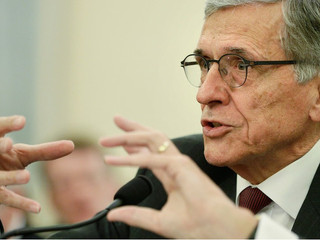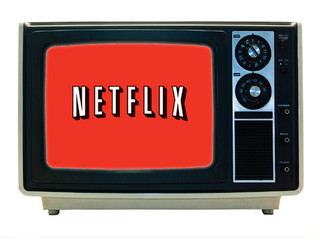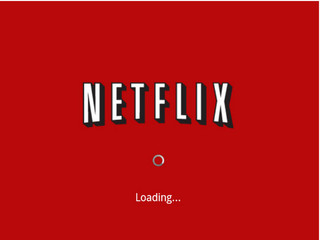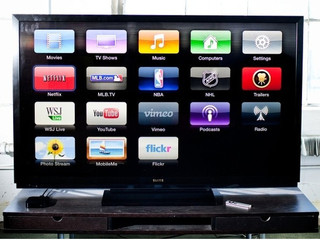Perseverance: From running out of money to an IPO - StubHub comes back strong
In the post-Covid drive for live events, ticket platforms are jumping at the opportune market time
Read more...
Welcome to the dawn of a new era. Today, the FCC is scheduled to vote on the future of the Internet. What can you expect when you’re expecting a new Internet? All we really know is that there are going to be some big changes—most likely a new “fast lane,” possibly the regulation of the Internet as a public utility, and a little heartburn, constipation, and dizziness. Congratulations on your new Internet-to-be!
But what’s at stake here?
The infamous “fast lane”
One of the big changes everyone is most concerned with is the creation of a fast lane, which will allow companies to pay for direct connections to Internet users. In Netflix’s case, this will look like a separate lane altogether. While the rest of the Internet is chugging along an overcrowded and sluggish highway, Netflix will get its own personal carpool lane. In Apple’s (rumored) case, it will take the form of a “last mile” shortcut, gaining a separate lane at the portion of an ISP’s tubes that connect to a subscriber’s home.
What this means is that companies with the money to pay for it can buy better performance.
But what about the rest of the Internet?
FCC Chairman Tom Wheeler has vowed to come down hard on ISPs who attempt to intentionally slow down the “slow lane.” But what does that really mean? Netflix accused Comcast of artificially slowing down its video streaming speeds to force Netflix and other video companies (which are big bandwidth hogs) to pay for better performance. But Comcast didn’t have to go out of its way to do this—all it had to do was let its transit connections get clogged up through a simple lack of maintenance.
And therein lies the problem. If Comcast and other ISPs are going to see more revenue from double-dipping via “fast lanes,” what incentive will they have to keep the slow lanes running smoothly? Can the FCC force ISPs to invest their resources in maintaining those slow lanes?
The Internet as a utility
That leads us into the other big change we might be seeing: the reclassification of the Internet as a utility. Under Title II classification, the Internet would be considered a utility that is so vital to communication and the economy that it must be regulated by the government. Under Title II, the FCC would most certainly be able to crack down on ISPs who let their slow lane transit connections fall into disrepair.
But, naturally, the ISPs themselves aren’t really cool with this idea. Like, at all.
Earlier this week, a bunch of ISP CEOs sent an open letter to the FCC imploring it not to put broadband Internet under Title II regulation. The letter, which was signed by the CEOs of Comcast, AT&T, Verizon, Time Warner Cable, and more, made the argument that under Title II regulation, “an era of differentiation, innovation, and experimentation would be replaced with a series of ‘Government may I?’ requests from American entrepreneurs.”
Catchy.
The CEOs go on to argue that the classification of broadband Internet as a utility “would greatly distort the future development of, and investment in, tomorrow’s broadband networks and services. America’s economic future…critically depends on continued investment and innovation in our broadband infrastructure and app economy to drive improvements in health care, education and energy. Under Title II, new service offerings, options, and features would be delayed or altogether foregone. Consumers would face less choice, and a less adaptive and responsive Internet.”
Would they? We can look to some other examples of highly regulated broadband Internet infrastructures worldwide to see what kinds of ill effects regulation has had. South Korea has one of the most tightly regulated Internet infrastructures in the world—and it’s also the fastest and most advanced.
A flourishing U.S. broadband infrastructure?
The letter went on to make the argument that the whole reason broadband Internet in the U.S. has flourished the way it has is precisely because it can do so without the burden of a regulatory framework. And then there was this little tidbit: “And broadband gets better every year: the average broadband speeds jumped 25 percent in 2013 alone,” which, the CEOs argued, highlights the fact that “there are no slow lanes in today’s Internet.”
Yes. Yes, broadband speeds climbed 25% in the U.S. in 2013. What the letter fails to mention is that that’s below the global average. On the whole, global Internet speeds climbed 27% in 2013. In South Korea—again, one of the most heavily regulated Internet infrastructures in the world—broadband speeds jumped a whopping 57%. So…you lose, CEOs.
But ultimately, will a more tightly regulated U.S. Internet make things much better?
BTIG analyst Richard Greenfield doesn’t think so.
“The Internet appears to work pretty amazingly well given the pace of technological evolution and we are far from convinced that government regulation is needed/required to protect consumers. We sense no urgency to impose meaningful regulation, until clear widespread consumer harms become evident,” Greenfield writes in a blog post. “We have a tough time seeing how Title II benefits consumers as it will serve to discourage investment in broadband infrastructure.”
Well, yeah, maybe. Except as it stands, investments in broadband are already decreasing. The cable industry funneled $17.65 billion into broadband infrastructure from 2005 to 2008, according to the National Cable and Telecommunications Association. But that figure dropped to $12.24 billion between 2009 and 2013.
But will we definitely, definitely see slower speeds among non-priority lanes?
Richard Greenfield does point out, however, that the creation of fast lanes doesn’t necessarily have to mean the creation of slow lanes.
“As MVPDs [multichannel video programming distributors] shift to an all-digital infrastructures, they have significant capacity to dedicate a larger portion of their “pipes” to broadband, which can meaningfully increase bandwidth available to consumers from today’s levels,” Greenfield writes. “Comcast advertises to consumers they are paying for 20 Mbps service (or whatever the advertised number is in a given market). If Comcast can deliver the advertised 20 Mbps downstream bandwidth, who is being harmed if a bandwidth intensive video product is paying for a fast lane that is not encumbered by the open Internet nor encumbering Comcast’s ability to deliver advertised bandwidth?”
Good point. But if Comcast knowingly lets its transit connections degrade and get clogged up to force video streaming services to pay for extra bandwidth, the subscriber is the one who has to deal with interruptions and slow buffering speeds while ISPs and Internet video companies play their game of chicken. Comcast subscribers saw their streaming quality degrade 27% over the course of a few months. Longer downloading and buffering times and frequent streaming freezes finally strong-armed Netflix into essentially paying a toll for a direct route to subscribers that bypasses the public Internet tubes altogether.
So there is, indeed, much at stake in today’s vote. What’s certain is that ISPs can’t have it both ways. They can’t get the extra revenue from pay-to-play fast lanes while also avoiding government regulation to make sure they’re not cheating the little guys.
Image source: philly.com
In the post-Covid drive for live events, ticket platforms are jumping at the opportune market time
Read more...EveryCure will leverage BioLogicAI, BioPhy’s predictive AI engine, to assess drug-disease matches
Read more...The contract will make it easier for state agencies to evaluate and implement Fusion's technology
Read more...



